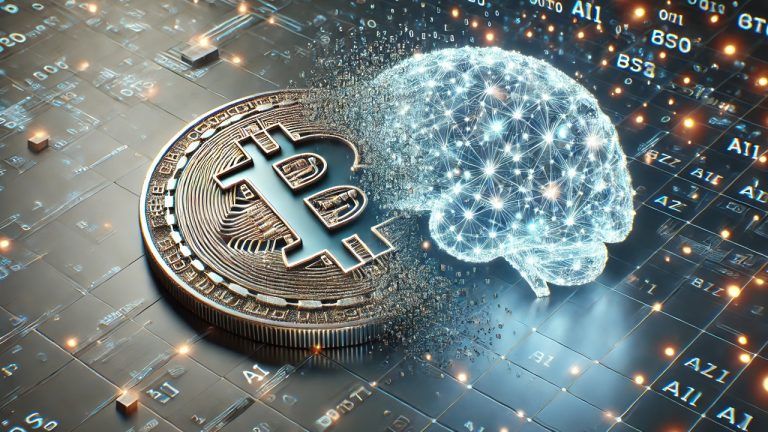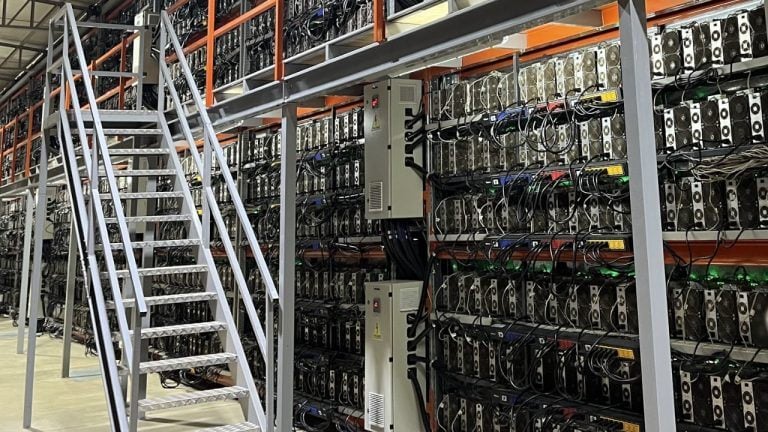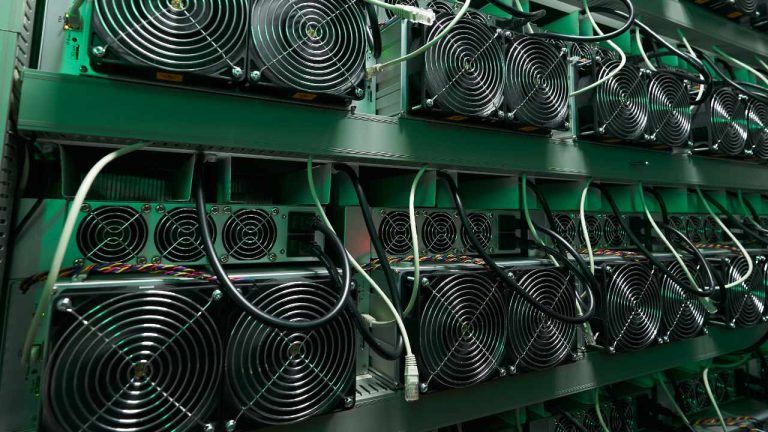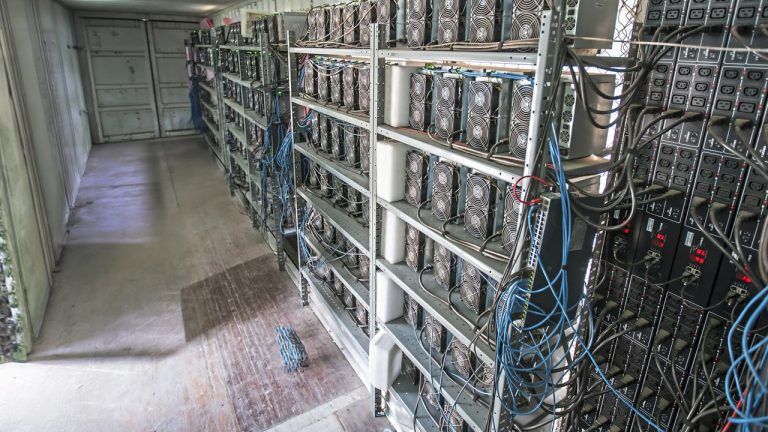
The world’s most valuable company is focusing on AI systems, or agents designed to exhibit autonomous decision-making.
Nvidia CEO Jensen Huang said his firm is focused on being at the forefront of agentic (autonomous) artificial intelligence, as it delivered record revenue in the third quarter.
“The age of AI is in full steam, propelling a global shift to Nvidia computing,” the company’s founder and CEO Jensen Huang said on Nov. 20, as the firm announced that its quarterly revenue was up 17% from the second quarter and 94% from a year earlier.
The lion’s share of that revenue, $35.1 billion, came from the company’s data centers, which help power the AI revolution. Huang anticipated continued strong demand for AI computing technologies, projecting Q4 revenue of $37.5 billion.
 Bitcoin miner Terawulf Inc. has completed the sale of its 25% stake in the Nautilus Cryptomine joint venture for approximately $92 million. The company said this week that it intends to use the proceeds to expand its high-performance computing (HPC) and artificial intelligence (AI) infrastructure at its Lake Mariner facility. Crypto Mining Firm Terawulf Sells […]
Bitcoin miner Terawulf Inc. has completed the sale of its 25% stake in the Nautilus Cryptomine joint venture for approximately $92 million. The company said this week that it intends to use the proceeds to expand its high-performance computing (HPC) and artificial intelligence (AI) infrastructure at its Lake Mariner facility. Crypto Mining Firm Terawulf Sells […] Cathedra Bitcoin Inc. has announced a significant shift in its corporate strategy, moving away from bitcoin mining to focus on growing its bitcoin holdings. The company aims to increase its shareholders’ bitcoin per share through a strategy similar to that of Microstrategy, which has gained recognition for its bitcoin acquisition policy. Cathedra Bitcoin Ditches Mining […]
Cathedra Bitcoin Inc. has announced a significant shift in its corporate strategy, moving away from bitcoin mining to focus on growing its bitcoin holdings. The company aims to increase its shareholders’ bitcoin per share through a strategy similar to that of Microstrategy, which has gained recognition for its bitcoin acquisition policy. Cathedra Bitcoin Ditches Mining […] Iris Energy has reported a 10% increase in bitcoin production during August 2024, with the company mining 245 bitcoin. The improvement is attributed to higher operational efficiency and reduced electricity costs following the company’s transition to spot pricing. Iris Energy’s Bitcoin Mining Efficiency Leads to Output Growth In its August 2024 investor update, Iris Energy […]
Iris Energy has reported a 10% increase in bitcoin production during August 2024, with the company mining 245 bitcoin. The improvement is attributed to higher operational efficiency and reduced electricity costs following the company’s transition to spot pricing. Iris Energy’s Bitcoin Mining Efficiency Leads to Output Growth In its August 2024 investor update, Iris Energy […]

According to CEO Phil Harvey, Bitcoin miners will average roughly $1.50 in revenue per terahash every month during the current market cycle.
As Bitcoin mining companies attempt to diversify operations into data centers to bolster revenue, the headlines have been dominated by this purported shift to high-performance computing. Phil Harvey—CEO of blockchain data center consulting firm Sabre56—sat down with Cointelegraph to explain why these headlines are unrealistic.
Harvey stressed that running an AI or high-performance data center is substantially more expensive than running a crypto mining facility. The CEO said a typical commercial mining operation costs between $300,000 and 350,000 per megawatt to run. In contrast, AI data centers cost between $3 million and $5 million per megawatt to run—a 10-15x increase.
According to the CEO, a mining operation with a gigawatt of available power will only be able to convert a maximum of roughly 200 megawatts of power for high-performance computing needs. The CEO told Cointelegraph:
 Bitcoin miner and high-performance computing (HPC) firm Iris Energy Limited has secured 10 exahash per second (EH/s) of Bitmain’s S21 XP Antminers, positioning the bitcoin mining company to reach 30 EH/s by the end of 2024. Iris Energy Expands Mining Capacity and AI Cloud Services Iris Energy Limited (Nasdaq: IREN) reported record financial results for […]
Bitcoin miner and high-performance computing (HPC) firm Iris Energy Limited has secured 10 exahash per second (EH/s) of Bitmain’s S21 XP Antminers, positioning the bitcoin mining company to reach 30 EH/s by the end of 2024. Iris Energy Expands Mining Capacity and AI Cloud Services Iris Energy Limited (Nasdaq: IREN) reported record financial results for […] International Monetary Fund (IMF) economists have warned of the environmental impact of crypto mining and AI data centers, which are projected to increase global electricity consumption to 3.5% by 2027, leading to higher carbon emissions. Proposing a targeted electricity tax, the authors estimate a potential reduction in emissions by 100 million tons annually, while generating […]
International Monetary Fund (IMF) economists have warned of the environmental impact of crypto mining and AI data centers, which are projected to increase global electricity consumption to 3.5% by 2027, leading to higher carbon emissions. Proposing a targeted electricity tax, the authors estimate a potential reduction in emissions by 100 million tons annually, while generating […] Cleanspark Inc. has completed the acquisition of its first bitcoin (BTC) mining site in Wyoming and secured 75 megawatts (MW) of power contracts. The Las Vegas-based company plans to add over 2 exahash per second (EH/s) to its mining capacity through a 30 MW immersion-cooled data center expected to be operational by the end of […]
Cleanspark Inc. has completed the acquisition of its first bitcoin (BTC) mining site in Wyoming and secured 75 megawatts (MW) of power contracts. The Las Vegas-based company plans to add over 2 exahash per second (EH/s) to its mining capacity through a 30 MW immersion-cooled data center expected to be operational by the end of […] Iris Energy Limited has announced an increase in its power capacity at the Childress site in Texas from 600 megawatts (MW) to 750 MW. This expansion follows approval from the Electric Reliability Council of Texas (ERCOT) and an amended connection agreement with American Electric Power (AEP). Iris Energy Expands Texas Operations On Wednesday, Iris Energy […]
Iris Energy Limited has announced an increase in its power capacity at the Childress site in Texas from 600 megawatts (MW) to 750 MW. This expansion follows approval from the Electric Reliability Council of Texas (ERCOT) and an amended connection agreement with American Electric Power (AEP). Iris Energy Expands Texas Operations On Wednesday, Iris Energy […]
io.net has built a decentralized physical infrastructure network that will source GPU computing power for AI and machine learning.
A project that started out as an institutional-grade quantitative trading system for cryptocurrencies and stocks has transitioned to become a decentralized network sourcing GPU computing power to serve increasing demand for AI and machine learning services.
Io.net has developed a test network that sources GPU computing power from a variety of data centers, cryptocurrency miners and decentralized storage providers. Aggregating GPU computational power is touted to drastically reduce the cost of renting these sources that are becoming increasingly expensive as AI and machine learning advances.
Speaking exclusively to Cointelegraph, CEO and co-founder Ahmad Shadid unpacks details of the network that aims to provide a decentralized platform for renting computing power at a fraction of the cost of centralized alternatives that currently exist.
Related: Future of payments: Visa to invest $100M in generative AI
Shadid explains how the project was conceived in late 2022 during a Solana hackathon. Io.net was developing a quantitative trading platform that relied on GPU computing power for its high-frequency operations, but was hamstrung by the exorbitant costs of renting GPU computing capacity.

The team unpacks the challenge of renting high-performance GPU hardware in its core documentation, with the price of renting a single NVIDIA A100 averaging around $80 per day per card. Needing more than 50 of these cards to operate 25 days a month would cost more than $100,000.
A solution was found in the discovery of Ray.io, an open-source library which OpenAI used to distribute ChatGPT training across over 300,000 CPUs and GPUs. The library streamlined the project’s infrastructure, with its backend developed in the short space of two months.
Shadid demoed io.net’s working testnet at the AI-focused Ray Summit in Sept. 2023, highlighting how the project aggregates computing power which is served to GPU consumers as clusters to meet specific AI or machine learning use cases.
“Not only does this model allow io.net to provision GPU compute up to 90% cheaper than incumbent suppliers, but it allows for virtually unlimited computing power.”
The decentralized network is set to leverage Solana’s blockchain to deliver SOL and USD Coin (USDC) payments to machine learning engineers and miners that are renting or providing computing power.
“When ML engineers pay for their clusters, these funds are directed straight to the miners that served in the cluster with their GPUs, with a small network fee being allocated to the io.net protocol.”
The project’s roadmap is set to include the launch of a dual native token system that will feature $IO and $IOSD. The token model will reward miners for executing machine learning workloads and maintaining network uptime while considering the dollar cost of electricity consumption.
“The IO coin will be freely traded in the crypto market and is the gate to access the compute power, while the IOSD token will serve as a stable credit token algorithmically pegged to 1 USD.”
Shadid tells Cointelegraph that io.net fundamentally differs from centralized cloud services like Amazon Web Services (AWS):
“To use an analogy, they’re United Airlines and we’re Kayak; they own planes whereas we help people book flights.”
The founder adds that any businesses that require AI computation typically use third-party providers, since they lack the GPUs to handle it all in-house. With demand for GPU’s estimated to increase by ten times every 18 months, Hadid says that these is often insufficient capacity to meet demand, leading to long wait times and high prices.
This is compounded by what he describes as inefficient utilization of data centers that are not optimized for the type of AI and machine learning work that is rapidly increasing:
“There are thousands of independent datacenters in the US alone, with an average utilization rate of 12 - 18%. As a result, bottlenecks are being created, which is having the knock-on effect of driving up prices for GPU compute.”
The upside is that the average cryptocurrency miner stands to gain by renting out their hardware to compete with the likes of AWS. Hadid says that the average miner using a 40GB A100 makes $0.52 a day, while AWS is selling the same card for AI computing for $59.78 a day.
“Part of the value proposition of io.net is first we allow participants to be exposed to the AI compute market and resell their GPUs and for the ML engineers we are significantly cheaper than AWS.”
Figures shared with Cointelegraph estimate that miners with GPU resources at their disposal could make 1500% more than they would from mining a variety of cryptocurrencies.
Magazine: Blockchain detectives: Mt. Gox collapse saw birth of Chainalysis